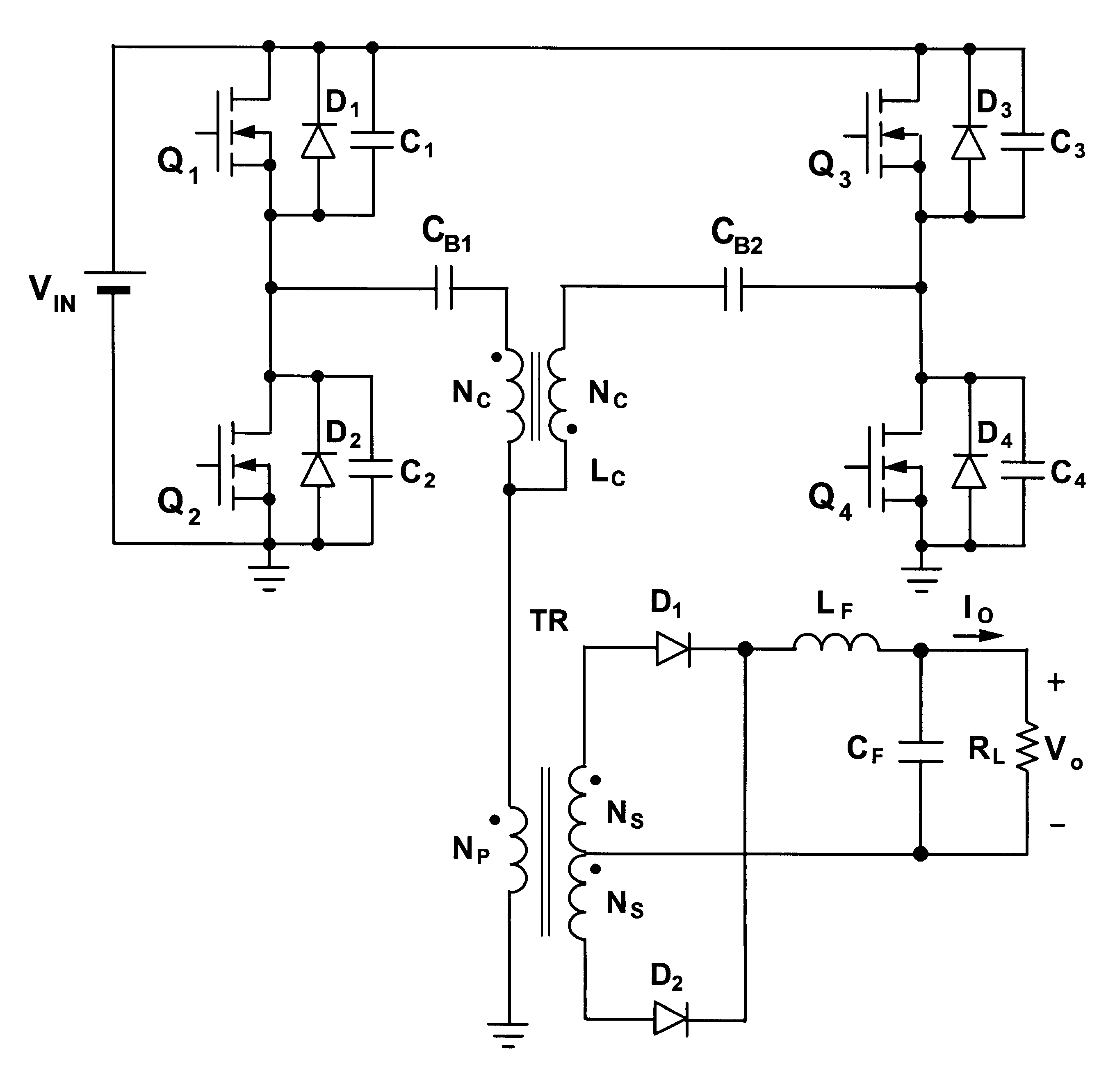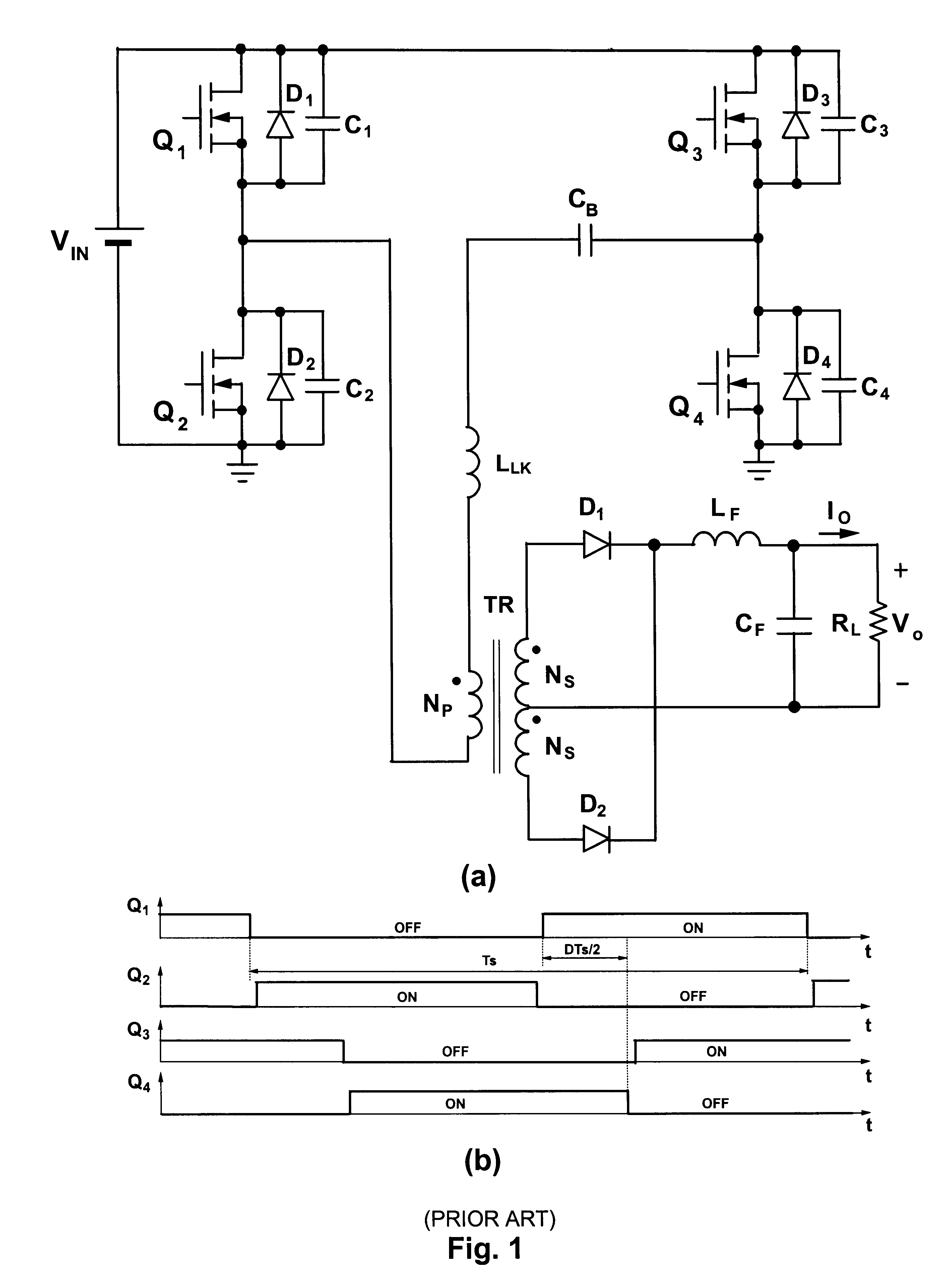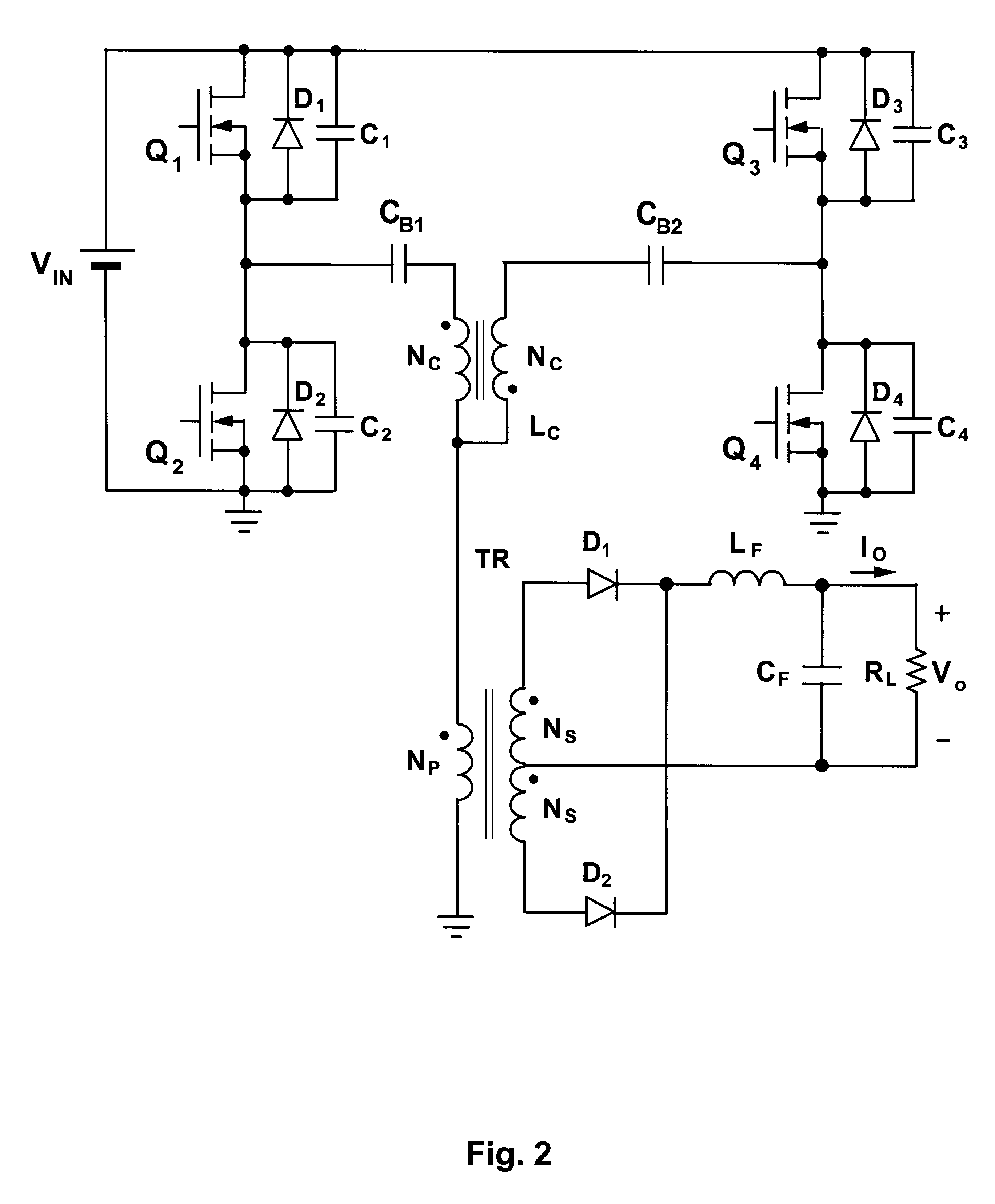Soft-switched full-bridge converters
- Summary
- Abstract
- Description
- Claims
- Application Information
AI Technical Summary
Benefits of technology
Problems solved by technology
Method used
Image
Examples
Embodiment Construction
FIG. 3 shows one of the generalized embodiments of the isolated, phase-shift-controlled FB ZVS-PWM converter of this invention. The circuit in FIG. 3, employs two transformers TX and TY, which have their respective secondary outputs connected to two output circuits X and Y. Generally, in the dc / dc implementations of the converter in FIG. 3, each output circuit X and Y includes a rectifier, low-pass filter, and load, whereas in the dc / ac (inverter) applications each output circuit X and Y consists only of a combination of a load and filter. Two constant voltage sources V.sub.1 and V.sub.2, connected in series with the primary winding of transformer TX, are employed to provide the volt-second balance on the windings of both transformers so that the transformers do not saturate.
Generally, the volt-second products of the windings of transformers X and Y in the circuit in FIG. 3 are dependent on the phase-shift between the turn-on instances of the corresponding switches in bridge legs S....
PUM
 Login to View More
Login to View More Abstract
Description
Claims
Application Information
 Login to View More
Login to View More - R&D
- Intellectual Property
- Life Sciences
- Materials
- Tech Scout
- Unparalleled Data Quality
- Higher Quality Content
- 60% Fewer Hallucinations
Browse by: Latest US Patents, China's latest patents, Technical Efficacy Thesaurus, Application Domain, Technology Topic, Popular Technical Reports.
© 2025 PatSnap. All rights reserved.Legal|Privacy policy|Modern Slavery Act Transparency Statement|Sitemap|About US| Contact US: help@patsnap.com



